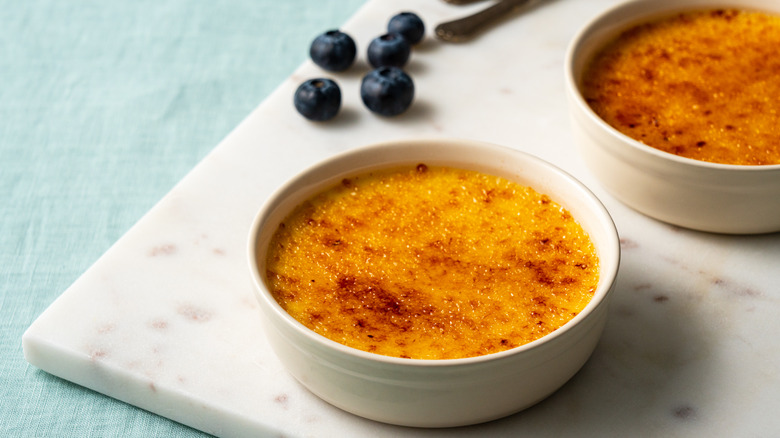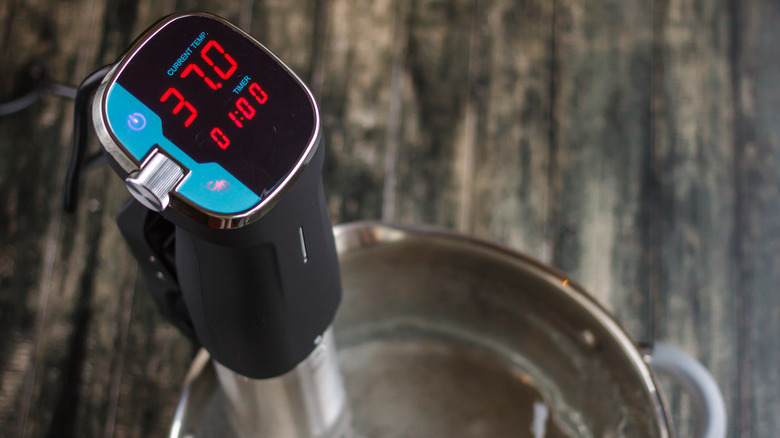Why It Pays To Sous Vide Crème Brûlée
Crème brûlée, a popular dessert served in many restaurants worldwide, was originally created in France. This unique treat consists of a rich custard that is poured into ramekins, topped with sugar, and torched or broiled in the oven until brown and bubbly. However, when it was first invented in 1691, a disc of sugar that was already caramelized was placed on top of the custard and served as is, according to Gambero Rosso. This dish became so wildly popular, that it was even served to Thomas Jefferson during his presidency at the White House. It's now evolved into not only a dish, but a signature flavor for cakes, cupcakes, and even ice cream.
While the flavor and texture are out of this world, one tedious task that crème brûlée requires is tempering eggs. According to Nielsen Massey, to temper eggs is to slowly introduce hot liquid to them, which gently heats them without scrambling, to create an emulsified base. Because this is quite difficult and requires both hands, it can often flop, which means the eggs end up cooking, or the mixture ends up separating. There's got to be a way around this...
Zero scrambling and less stress
According to The Flavor Blender, making crème brûlée in a sous vide is a great alternative that prevents you from having to stress over tempering eggs. The sous vide regulates and maintains a water bath at a consistent temperature so you can add vacuum-sealed food and it will only cook up to the temperature the water is held at. This technique allows chefs to cook many types of food at once, without the risk of overcooking it, and especially comes in handy when cooking meats. Because this appliance applies gentle heat, this is a perfect method for a foolproof crème brûlée. Forget about scrambled eggs or cracked glass jars, and welcome the days of a sweat-proof alternative to silky smooth crème brûlées for a crowd.
The Flavor Blender cooks their custard in sealed mason jars, which gives them an extended shelf life compared to baking them in a ramekin. Because the sous vide also sterilizes the jars just like you would during a canning process, if you store your sous-vide crème brûlée in the fridge unopened, it can last up to two weeks. This is great for a make-ahead option when entertaining in the future. If you don't have mason jars, Izzy Cooking recommends pouring your custard into a resealable bag, vacuum sealing it shut using their water displacement technique, cooking it for about one hour, and pouring the custard into ramekins. You'll be eating delicious, creamy crème brûlée in no time; no scrambled egg guaranteed!

